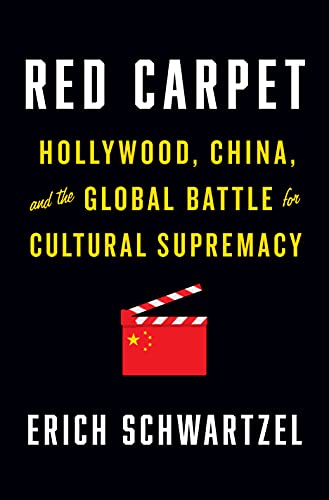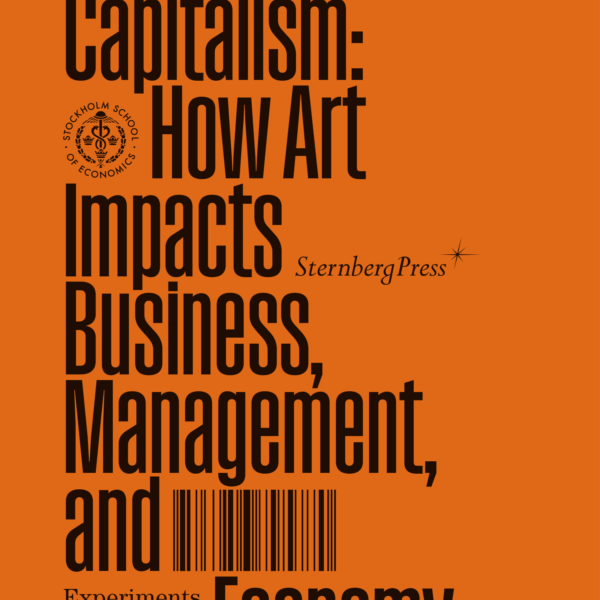A review of the new book by Erich Schwartzel, Red Carpet: Hollywood, China, and the Global Battle for Cultural Supremacy (Sept. 2022)

Erich Schwartzel worked as a reporter for the American newspaper Wall Street Journal, where he oversaw “Hollywood coverage”. As he worked his beat, he began “seeing China everywhere” in the American movie industry news. This growing Chinese presence in Hollywood, both thematic (movie plots, self-censorship) and physical (Chinese actresses in blockbusters), led him to write a book on the topic: Red Carpet. The book is non-academic writing, but rather a chronological journalistic take on the evolution of China-Hollywood ties. As such, his analysis is based on various interviews and newspaper articles.
The book is divided into three parts, retracing the rise of the Chinese film industry from its slow opening to Hollywood movies in the 1990s, to its becoming the highest-grossing box office in the world in 2020.
In the first part, Schwartzel retraces the rise of Hollywood, and its growing ambitions to penetrate a rising Chinese market in the 1990s. After a distribution agreement in 1993, marking the beginning of Hollywood’s breakthrough in China with Andrew Davis’ The Fugitive, it was soon obvious that the potential profits would involve concessions to American directors’ freedom of speech. In order to maintain a presence in China, American producers have had to strike a delicate balance by developing various strategies to overcome censorship and by avoiding sensitive topics. Taking the case of various movies, the author retraces how Hollywood has learned the “do’s and don’ts” of business with China. For instance, the 1997 movie Seven Years in Tibet about Dalai Lama caused Sony to compromise its activities in China, including the export of hardware and home appliance. Disney’s 1997 movie on the same topic, Scorsese’s Kundun, had to make it so as few people would watch the movie at its release despite a potential critical success in the US. Through self-censoring and their positive depiction of Chinese folklore with the 1998 Disney movie Mulan (clearly targeted towards China to ease the authorities after the two-year ban of Disney that followed the release of Kundun), Hollywood has managed to conquer China’s audiences in seemingly win-win cooperation. American movies cannot be political: as said in 1998 by Disney CEO Michael Eisner, “in short, we’re (…) a company that uses silly ways to amuse people”.
The second part shows the growing ambitions of the Chinese movie industry and its will to learn from Hollywood to make American-style domestic blockbusters. While buying out studios in the US, Chinese companies, such as Wanda Entertainment, started heavily investing in the movie distribution business. They used national regulations to kick out their American partners from the industry in the process. In the meantime, Hollywood studios strove to appeal to the growing number of Chinese moviegoers, which represented a market that slowly became their main source of revenue, as seen with the tremendous success of franchises like Avatar and Transformers in the country. Several strategies are then used to please the censorship board, including the use of “Chinese elements”, a cast of Chinese actresses, and great care taken to avoid offending Chinese sensitivities: Schwartzel notes that apart from a failed attempt in 2012 with the Red Dawn movies, no Hollywood movie has ever treated China as the movie: Villain. Many movies get censored, out of “ideological caution”. For instance, there was no mention of Freddie Mercury’s homosexuality in the Chinese edition of the 2018 movie Bohemian Rhapsody. Meanwhile, Chinese authorities have tried to learn from American successes in China: the 2008 movie Kung Fu Panda, despite being an American take on China’s mythology, was a smash hit that China could not replicate for years with its national productions.
The third part tells how the Chinese movie industry, driven by national growth and international context, has positioned itself as a serious competitor to Hollywood. Using Hollywood’s technical know-how and storytelling, which the author compares to “technology transfers”, Chinese studios have managed to create national superheroes, as shown by the success of Wolf Warrior 2 (2017). The Chinese film industry finally managed to create appealing propaganda movies through more subtle methods by learning from patriotic American films. Chinese studios have even started making domestic franchises, often deemed the “hardest aspect” of Hollywood-style moviemaking. Schwartzel then parallels Xi Jinping’s tightened control over the movie industry with Mao Zedong’s views on the role of art as a conveyer of the State’s ideology. As such, the author takes the example of the “disappearance” of Fan Bingbing before the shooting of the American movie The 355 (2021), because of her glamorous lifestyle, as opposed to Jackie Chan, whose positive depiction of the Belt and Road Initiative in his movies has led to his endorsement by the authorities. The author believes that Xi Jinping aims to export the CCP’s views and governance model worldwide in order to recreate the American soft power strategy of “winning hearts and minds”. Schwartzel describes how Hollywood’s relationship with the Chinese market began with enormous initial gains, described by some of its executives as a “bag of money found in the street“, which led to a dependence on the Chinese market: “Chinese theatres do not need American movies to keep their theatres open anymore”. From Schwartzel’s perspective, Hollywood’s willingness to seek pure profit ultimately helped build its own competition. The consequences of displeasing China can go as far as putting a halt to some Hollywood actors’ careers. For instance, Richard Gere, who openly criticized the Chinese Communist Party, ended up having a hard time finding contracts in American productions, being “blacklisted” everywhere, according to Schwartzel.
Given the scarcity of Western literature about the Chinese movie industry and Hollywood ties with China, Schwartzel’s book grants the reader valuable insight. The author of Red Carpet interviewed the main Hollywood personalities who have been involved in the opening of the Chinese market, its growth ambitions, as well as the changes Hollywood has undergone to cope with this new actor for the first time in the book. In the context of the US-China trade war, Schwartzel’s work brings up new elements to better understand the global struggle for influence between the two superpowers. Using a very interesting perspective, the second-to-last chapter takes the reader to Kenya, showing how this cultural war gets exported even in some rather remote areas.
However, the book’s very one-sided perspective does not allow for a comprehensive understanding of the subject. Schwartzel tends to conflate Xi Jinping, a single leader, with the entirety of the Chinese political apparatus, over-simplifying the different views and interests of various actors. Furthermore, the Chinese perspective is massively underrepresented, consisting mostly of official discourse analysis and some scarce English-language Chinese press releases. Schwartzel ultimately relies on interviews with the people who met with Chinese actors, directly or indirectly, rather than providing any real insight into the Chinese movie industry itself. Therefore, the reader should not expect to better understand the Chinese movie administration, its actors, or the recent organizational changes in the field of cultural influence.
• Erich Schwartzel, Red Carpet: Hollywood, China, and the Global Battle for Cultural Supremacy, Penguin Press, 2022, 399 pages.
* Book reviewed by Simon Costes, who speaks mandarin, a researcher specialized on China.





